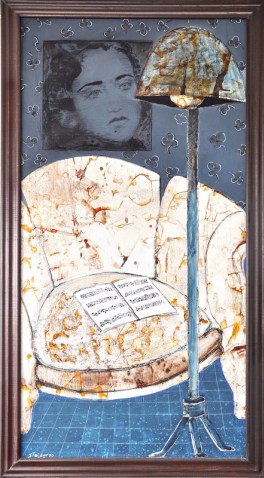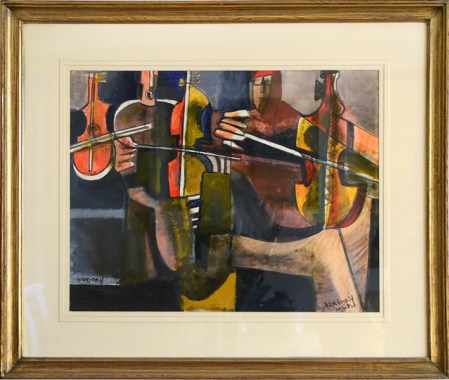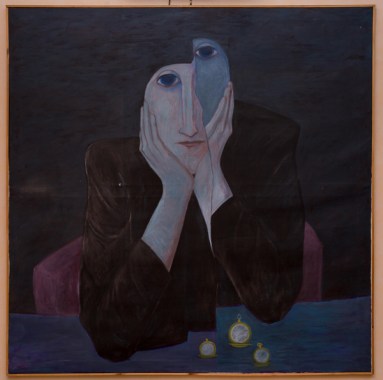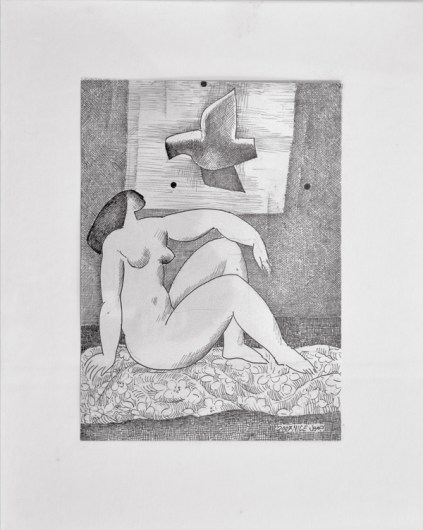
Many of the works in Mohammed Al-Sharekh’s collection were created by life-long friends, filling his house with shared stories and happy memories
Mohammed Al-Sharekh, Kuwaiti chairman of the Sakhr Software Company, is the man responsible for introducing the Arabic language into the world of computers and technology. He tells Selections how his love of literature and art led him to champion the Arabic language, as well as to gradually accrue a significant collection of Egyptian and Arab art.


When did you start collecting art and what prompted you to start doing so?
When I was living in Cairo and studying at Cairo University in the ’60s, I got acquainted with a group of writers, artists and poets. Although I was studying economics at the time, my true passion was writing and the Arabic language. I wrote several short stories that were published during my university years, and my life in Cairo revolved around this group which included Hassan Soleman, Ahmed Morsi, Fathi Afifi, George Bahgory, Gamil Shafik and Adam Henein.
Even after graduating and coming home to work for the Kuwait Fund for Arab Economic Development, and later starting Sakhr Software and arabising the computer, I would return often to Cairo on visits and see this group, engaging in discussions about poetry, art and literature. I never saw myself as an art collector or bought art for the sake of my art collection. My first painting was a gift from my dear friend Hassan Soleman for my wife and I, during our honeymoon in Cairo. Our life became surrounded by beautiful paintings created by dear friends, until eventually all our walls metamorphosed into their stories.


Can you tell us a little about your collection? What kind of art do you collect?
My collection consists mostly of post-modern Arab art, with a focus on artists from Egypt spanning 40 years, from 1968 until 2008. Like many of my generation who grew up in the ’60s, I was connected to the ideals of pan-Arabism and the preservation of our Arab culture and language. In my view, the Arabic word was an integral part of our heritage, which required conservation, and as a way to insure its continued existence I invested in digitising it. During my travels, when I visited galleries and museums, I seldom saw the talented Arab artists I knew so well back home being represented on their walls. I longed for the world to see the depictions of our rich Arab culture in museums, and wished to bridge this gap between East and West through art.


Which works are your favourites?
One of my favourite works from my collection is Al Maraa New York (New York as a Woman) by Ahmed Morsi. Naturally, New York is a woman who plans, executes and watches as she builds with iron will and determination. In a red dress and diamonds, with all the modern conveniences and technologies at her fingertips, it is a woman that builds New York. In Tala Min al Shabak (Glimpse from the Window) by Hilmi al Tuni we behold the sunrise and a face looking out of a window onto the world, with colours that are mosaic-like, without light or shadow. Tahmeem al Jamoosa (Bathing the Ox) by Hassan Soleman was created at his peak in the ’60s; a calm, peaceful blue background envelopes the boy washing the ox.


Another piece I love is Um Fahad by George Bahgory. Beside this portrait of my wife, I am not aware of any other paintings by Bahgory in the classical style. Capturing her in an aristocratic stance, with a dramatic yellow brooch on her chest, Bahgory sketched out the throne and blended it with her dress in glorious symmetry. In Asmahan, Adel El Siwi depicts a regal chair and an open notebook of musical notes, a reading light with a hanging portrait of Asmahan the singer on the wall behind. It’s a world full of light and music, as Asmahan’s seductive eyes pull you in and the blue of the wall lulls you into pleasure.
A version of this article appeared in print in Selections, The Collectors Issue #38, pages 80-85.

